For a better understanding of what is going on with your hair, you need to know what hair is made of. In this article, we will talk about hair structure and life cycles.
Hair from A to Z
Every hair has a shaft and a root. The shaft is the visible part of hair that grows above the skin at an angle between 10-90°. Hair is formed by layers of cells of different types and purposes. Outside, it has a protective cuticle – flat keratinized cells lining the shaft with overlapping scales. The layer under the cuticle is called the hair cortex – keratinized cells which contain hair coloring pigments. Medulla is the innermost layer of the hair shaft, containing mitochondrial DNA. The hair bulb (inner root), is lodged into the skin (the hair bulb hole, or outer root). Together they form a hair follicle, or bulb.
At the bottom of the hair follicle is the dermal (hair) papilla – a formation rich in blood vessels, which is the vital basis of the hair. Without the papilla, hair cannot live. If you remove the hair and keep the papilla, it will begin a new hair. Sebaceous and sweat glands are connected to the follicle, and they are responsible for the formation of a protective film on the hair. Hair is also coupled with a muscle-lifter, which causes hair to stand up (goose-bump effect).
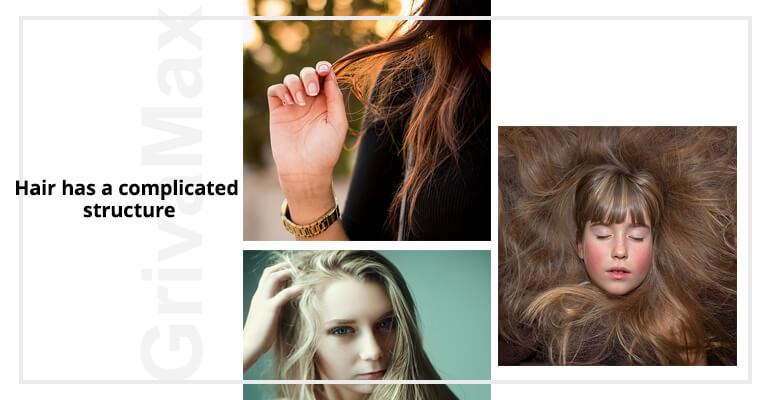
These are the main elements of the hair structure, but their interposition can change according to the life cycle of the hair:
- Anagen (growth)
- Catagen (transition)
- Telogen (rest)
- Exogen – phase of falling out
Anagen
Let’s make it clear that here we are talking about hair on the head. Because, for example, body or pubic hair grows non-stop during the entire hair life-cycle. During the anagen phase, the hair on the head is actively growing (about a centimeter per month). The follicle is closely connected to the dermal papilla, receiving necessary nutrition while cells in the bulb are actively multiplying.
Normally, this is a long phase, lasting anywhere from three to five years. That’s why women can grow hair even down to their heels. The absolute majority of hair, about 80-90%, are in the anagen state, since this phase lasts the longest.
The anagen phase can’t last forever, and at some point hair has to be changed. Germ cells, lodged in a special bulge attached to the follicle, start migrating from the hair bulb down towards the dermal papilla, where they will turn into the germ cells of new hair.
If the normal work of this cycle is violated, then a person might experience problems with hair regeneration, which is when old hair is falling out and new ones don’t grow back.
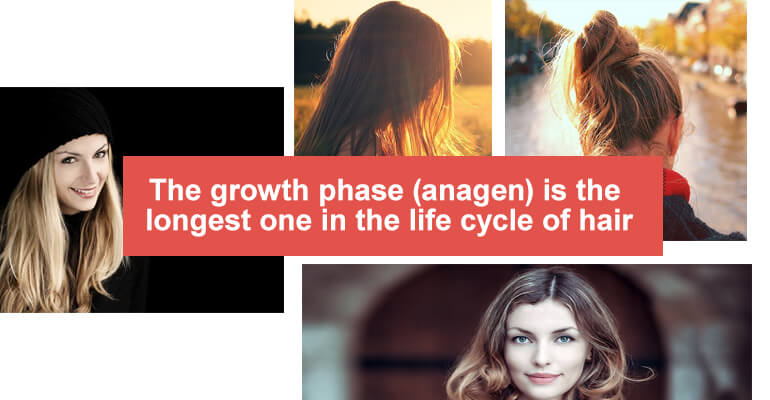
Catagen
This is the transition phase of the hair life cycle. It is the shortest one and lasts only 2-3 weeks. Normally, only 1-2% of hair is in this phase.
During this phase, the hair bulb disconnects from the papilla, cells begin to die (keratinize), and the growth ends. At the end of the root, you can see a typical tuberous bulb, which is a normal sign of the full hair life cycle that trichologist specialists look for during hair inspections.
The germ cells and parts of the outer roots remain attached to the papilla to give life to new hair. If the papilla is also dying, then it will be replaced by a new one.
Telogen
During this phase, hair is more dead than alive. But don’t hurry up to say good bye to it: it will stay on the head for a while – from three to four months. 10-15% of hair is in this phase.
As the follicles continues to atrophy, the outer part of hair bulb stays connected to the papilla. When the hair falls out, the shaft and inner root leave the bulb hole, the germ cells begin to actively multiply, and the new hair grows. Sometimes, the hair is removed without a nodule on its end, and then later it will be pushed out by new hair.
Very often, hair in the telogen phase is removed with mechanical actions, such as when you wash your hair or comb it. 50-100 hairs leave the head every day.
Now you see that hair is quite a complicated structure and lives its entire life in constant change. It’s amazing how nature creates and organizes every small detail of our body.
 918
918


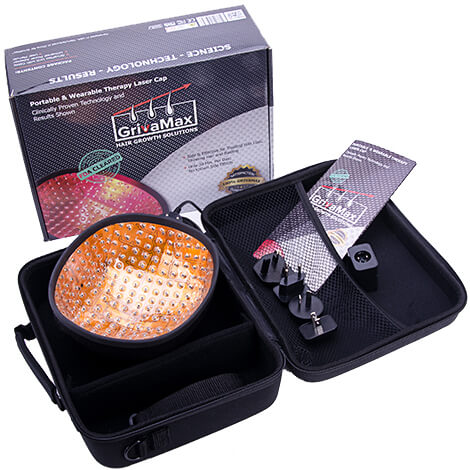




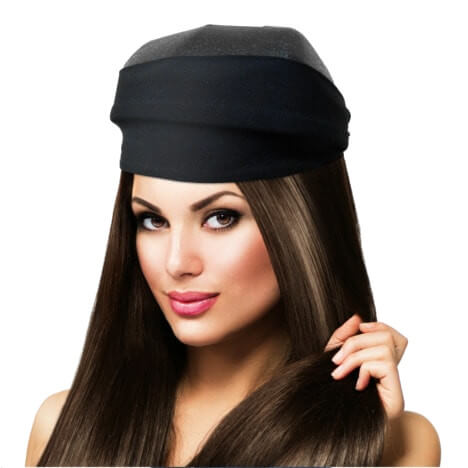



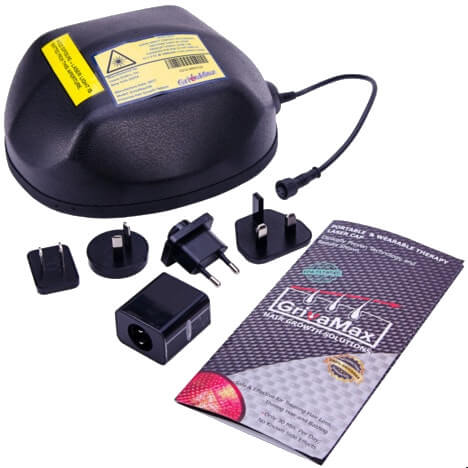



Does the use of the hair loss laser cap affect the hair structure?
Does the use of the Hair-Loss Laser Cap affect the hair structure?
No, GrivaMax Laser Cap does not affect the hair structure. More details can be found here https://www.ncbi.nlm.nih.gov/pmc/articles/PMC4265291/
I noticed hair loss while I was washing my head. Is this normal or does it require a treatment?
The loss of 50-150 hair per day is natural and does not require treatment. If you think that you hair loss is above the norm, you should consult your doctor to determine the exact cause and receive a professional treatment recommendations.